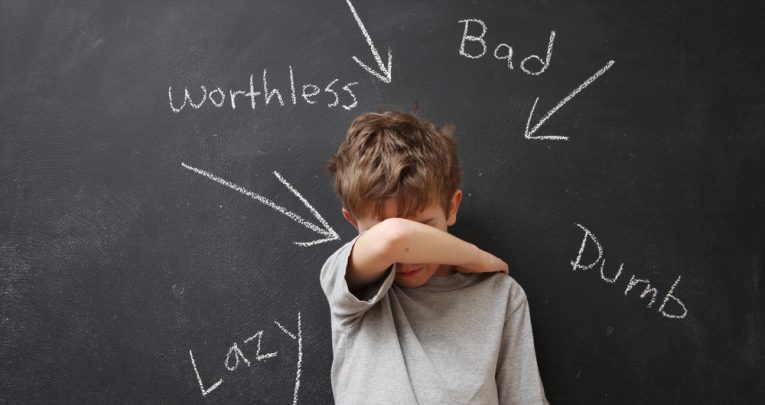We Can’t Tolerate The Government’s Zero Tolerance Policy

Pam Sammons on why the DfE’s hard line on failure should be ringing alarm bells

- by Pam Sammons

The government has been slow to consolidate its education strategy since last year’s election, leaving big question marks around key manifesto pledges [PDF]. But as an academic working to support school improvement, its planned emphasis on ‘zero tolerance of failure’ is perhaps the part that rings alarm bells the loudest.
This concern around morale also applies to teachers. Linking pupils’ attainment back to an individual teacher’s performance (and potentially his or her pay and progression) will only increase pressure. This will in turn exacerbate problems relating to teacher supply, recruitment and retention, and drive a culture that promotes the narrowing the curriculum in order to promote test outcomes. When CVA influences are factored in, as they should be, it becomes clear that accountability needs to lie with schools, not individual teachers.
No more like-for-like
School leaders will likely also view this new zero tolerance principle with concern, and particularly the absence of like-for-like comparisons.
For low-attaining pupils, the equity gap in achievement typically starts before school age and is statistically very difficult to close throughout the education system. Zero tolerance doesn’t tackle the underlying challenges contributing to this, which include the failure to provide enough high-quality preschool and primary places, insufficiently trained teachers and the lack of schools in neighbourhoods where they’re most needed. So what are the implications for school improvement? Ideally, schools should focus on delivering an improved quality of education, rather than developing new tactics to minimise the fallout for children yet to reach the future equivalent of Level 4. Schools need to ask how they can truly add value to all children, regardless of background. Using research-based evidence to identify what factors support achievement and improve teaching and learning remains crucial.
School leaders need to understand whole-school performance, prioritise and allocate resources appropriately. That means diagnosing the school’s strengths, identifying foci for improvement and finding ways to address them.
A narrative around improvement
We must resist the temptation to criticise schools for all the differences outside of their control. The early years are vital, and supporting children and families from a very young age should remain a strong focus.
All practitioners should see school improvement as being at the heart of their work, in order to help all children achieve success. To create that positive narrative around improvement, leaders should focus on retaining the best teachers, ongoing professional development, building morale and creating positive learning experiences. But it also means we must get better at diagnosing why individual children are not achieving and optimising the resources available inside and outside of school, as well as encouraging teacher and parent support. Zero tolerance is far removed from the proven principle that good teaching, formative feedback and encouragement, rather than criticism, are what supports a child best. Schools must be allowed to achieve their core mission of promoting the best outcomes for all children through enrichment, rather than stigmatising children and narrowing the curriculum.
Pam Sammons is a Professor of Education at the University of Oxford and a Senior Research Fellow of Jesus College, Oxford. She has worked on school effectiveness and improvement for over 30 years and is an expert advisor to the Oxford Owl Pathways to School Improvement
This will require children not reaching the equivalent of Level 4 in primary to resit tests at secondary school. For me, it raises concerns about how schools will bring this approach into their improvement plans – and that’s before we even get to the demoralising impact it will have on pupils labelled as ‘failures’…
Putting results in context
The concept of ‘zero tolerance’ on education is nothing new, having been brought in by Conservative reforms in the early 1990s, and later taken up by New Labour. Up until now, the focus has been on pupils’ results; after 1997, government policy explicitly acknowledged the important role of social disadvantage in shaping attainment. As a result, both Ofsted and the then Department for Children Schools and Families developed contextual value added (CVA) indicators, which factored in differences in pupil intake characteristics beyond the school’s control, such as prior attainment, pupil eligibility for free school meals (FSM) and neighbourhood deprivation.
This contextualisation of school results, however, was quickly abolished by the Coalition in 2010. While the idea of zero tolerance has meant different things to different governments, this latest definition marks a major change in terms of how it labels individual children. The problem with this labelling is two-fold. Firstly, there’s the demotivating effect it has on children. But secondly, how do we ensure that low-attaining children are not made unattractive to schools by the stigma attached to them being labelled ‘failures’, and ensure that entrance policies are fair? Then there’s the uneven playing field created by free schools and academies, which are held to different standards and measured within a different context compared with local authority schools.
This concern around morale also applies to teachers. Linking pupils’ attainment back to an individual teacher’s performance (and potentially his or her pay and progression) will only increase pressure. This will in turn exacerbate problems relating to teacher supply, recruitment and retention, and drive a culture that promotes the narrowing the curriculum in order to promote test outcomes. When CVA influences are factored in, as they should be, it becomes clear that accountability needs to lie with schools, not individual teachers.
No more like-for-like
School leaders will likely also view this new zero tolerance principle with concern, and particularly the absence of like-for-like comparisons.
For low-attaining pupils, the equity gap in achievement typically starts before school age and is statistically very difficult to close throughout the education system. Zero tolerance doesn’t tackle the underlying challenges contributing to this, which include the failure to provide enough high-quality preschool and primary places, insufficiently trained teachers and the lack of schools in neighbourhoods where they’re most needed. So what are the implications for school improvement? Ideally, schools should focus on delivering an improved quality of education, rather than developing new tactics to minimise the fallout for children yet to reach the future equivalent of Level 4. Schools need to ask how they can truly add value to all children, regardless of background. Using research-based evidence to identify what factors support achievement and improve teaching and learning remains crucial.
School leaders need to understand whole-school performance, prioritise and allocate resources appropriately. That means diagnosing the school’s strengths, identifying foci for improvement and finding ways to address them.
A narrative around improvement
We must resist the temptation to criticise schools for all the differences outside of their control. The early years are vital, and supporting children and families from a very young age should remain a strong focus.
All practitioners should see school improvement as being at the heart of their work, in order to help all children achieve success. To create that positive narrative around improvement, leaders should focus on retaining the best teachers, ongoing professional development, building morale and creating positive learning experiences. But it also means we must get better at diagnosing why individual children are not achieving and optimising the resources available inside and outside of school, as well as encouraging teacher and parent support. Zero tolerance is far removed from the proven principle that good teaching, formative feedback and encouragement, rather than criticism, are what supports a child best. Schools must be allowed to achieve their core mission of promoting the best outcomes for all children through enrichment, rather than stigmatising children and narrowing the curriculum.
Pam Sammons is a Professor of Education at the University of Oxford and a Senior Research Fellow of Jesus College, Oxford. She has worked on school effectiveness and improvement for over 30 years and is an expert advisor to the Oxford Owl Pathways to School Improvement











